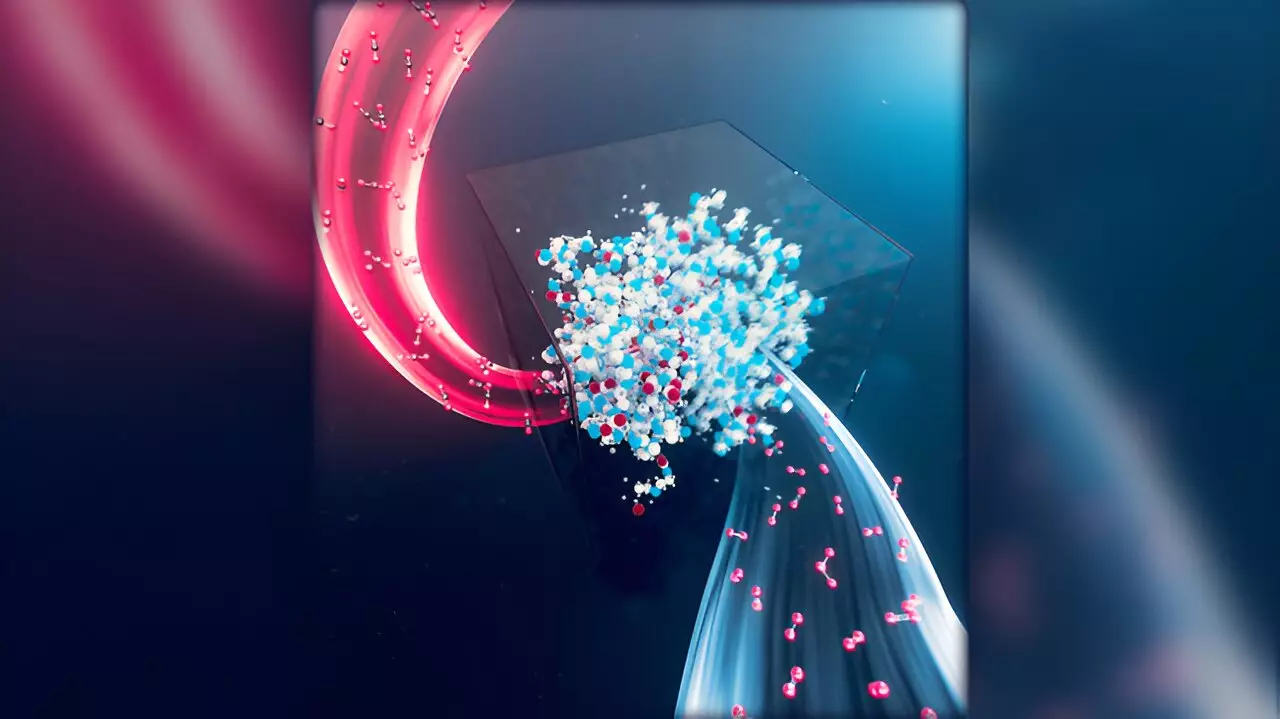Direct Air Capture (DAC) technologies are gaining attention as critical solutions to combat climate change by removing carbon dioxide (CO2) from the atmosphere. The relevance of these technologies has sparked extensive research, particularly on the materials used for CO2 capture. Amid this discourse, scientists from Lawrence Livermore National Laboratory (LLNL) and the Georgia Institute of Technology have made a pivotal advancement in understanding how CO2 affects the stability and effectiveness of amine-functionalized porous solids, which are essential for enhancing DAC efficiency. This breakthrough, recently highlighted in the Journal of the American Chemical Society, marks a significant step towards developing more long-lasting and effective carbon capture materials.
Poly(ethylenimine) (PEI) sorbents are lauded for their remarkable ability to capture CO2, especially under conditions where gas concentration is extremely low. However, one of the major setbacks associated with these materials is their susceptibility to oxidative degradation over time. Although existing literature has documented the effects of different environmental factors on PEI degradation, the exact role CO2 plays in this process has remained fuzzy and somewhat contradictory. This recent research seeks to clarify those ambiguities by exploring how CO2 influences oxidation kinetics, revealing complex relationships that could redefine material design for DAC technologies.
One of the groundbreaking revelations from the study is the dual role CO2 plays in the oxidation reactions of PEI sorbents. Simon Pang, the lead researcher, emphasizes the crucial need to account for all atmospheric components when fabricating DAC materials. The findings indicate that while CO2 can catalyze oxidation reactions that contribute to material degradation, it also has the potential to hinder those reactions by reducing the mobility of polymer branches, which ultimately slows down radical propagation. This non-monotonic effect—where CO2’s influence varies with temperature and concentration—provides invaluable insights into how researchers can tailor sorbents for improved performance.
Beyond simply clarifying theoretical discrepancies, the implications of this research extend directly to the future development of DAC technologies. The study cautioned that the mobility of polymer side chains and the presence of acidic environments significantly accelerate oxidative degradation. Consequently, this sets the stage for innovative strategies aimed at prolonging the functional life of sorbents. Prospective solutions involve modifying the chemical composition of the sorbents by adding functional groups or using additives that stabilize the structure and maintain performance under various environmental conditions.
This comprehensive examination of CO2’s interaction with amine-functionalized sorbents marks a crucial milestone in advancing carbon capture technology. As scientists push the boundaries of material science and environmental engineering, harnessing the insights from this research can lead to stronger, more efficient substances capable of withstanding the rigors of long-term CO2 capture. Such advancements not only offer a hopeful glimpse into combating climate change but also pave the way for the development of cost-effective and durable solutions essential for a sustainable future.


Leave a Reply